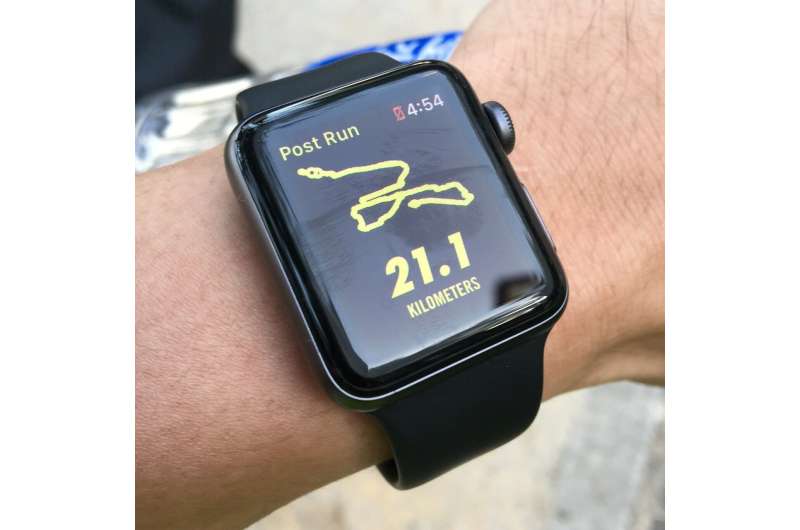Researchers standardize collection, reporting of wearable activity trackers' data

Wearable activity trackers are not only popular with consumers but also commonly employed by clinicians for both real-time and remote monitoring of patients' physical fitness. When these devices are used as healthcare monitoring tools in medical research studies, however, there's an issue: inconsistency. To help remedy this, a team led by University of California, Irvine researchers has developed a framework for standardizing data collection and reporting.
The study was recently published online in the International Journal of Medical Informatics.
"Activity trackers capture personalized data that can provide insights in healthcare analytics and user feedback on health status, for both patients and healthy individuals, but there's a lack of standardization in reporting on the metrics they generate," said corresponding author Alexandre Chan, UCI chair and professor of clinical pharmacy practice. "These devices may revolutionize healthcare by allowing researchers to monitor symptom severity and assist clinicians in providing their patients more holistic care and, ultimately, improve people's quality of life, but the biometric statistics obtained can be highly variable. Our aim is to improve the consistency of reporting."
The researchers' recommendations provide a minimum threshold framework for reporting adherence, validity and physical activity measures in clinical studies.
Several commercial trackers have been used in medical research, with the Fitbit being the most common. Brands integrate different sensors—such as accelerometers, global positioning systems and gyroscopes—into the devices, and various algorithms are used to determine activity outputs, including step count, distance traveled and sleep patterns. These personal biometrics are input into each individual's specific account, which can then be accessed directly or through third-party fitness applications.
The team conducted a systematic review of observational or intervention medical research studies of both healthy and patient populations via the PubMed and Embase databases. Although inconsistencies were found in measurement and reporting data, commonalities and definitions of the types of activity tracker-derived measures were identified to develop recommended minimum reporting thresholds. Key metrics were adherence data, or the percentage of days the trackers were worn; validity period, or the adequate wear time per day and per week; and physical activity measures, including step count, acceleration levels, energy expenditure and intensity.
"With the growing use of activity trackers in clinical research, our framework may help facilitate the development of standardized data collection and reporting. Our recommendations are the first step. Currently, we're applying our recommendations to a set of medical tracker data that we've collected from an international study involving adolescent and young adult cancer patients and volunteers. Future studies will need to evaluate the feasibility of adopting minimum reporting thresholds for data generated by these wearable devices," Chan said.
More information: Alexandre Chan et al, Reporting adherence, validity and physical activity measures of wearable activity trackers in medical research: A systematic review, International Journal of Medical Informatics (2022). DOI: 10.1016/j.ijmedinf.2022.104696. www.sciencedirect.com/science/ … ii/S1386505622000107



















